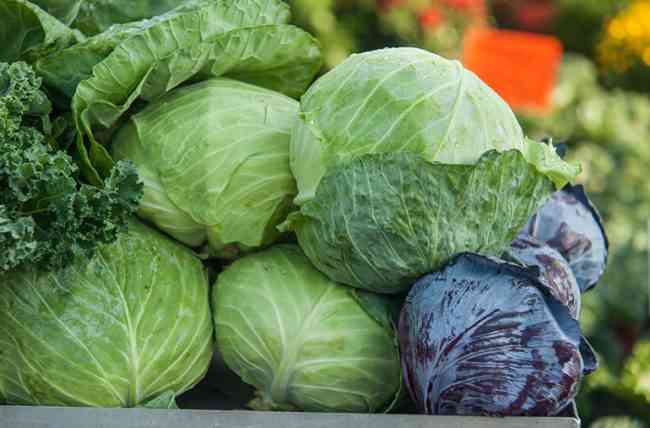
CABBAGE, which is native to western Europe, has been cultivated for at least 3 000 years and is today a major crop worldwide, says Bill Kerr.
Cabbage (Brassica oleracea) belongs to the Brassicaceae family, which includes many cultivated species such as broccoli, cauliflower, turnips and Brussels sprouts.
Another name for Brassicaceae is Cruciferae, from which we get “cruciferous” vegetables.
Before cabbage became a part of human diet, it was used as a medicinal crop for a range of ailments. Today, cruciferous vegetables are still highly regarded for their health benefits, and have been studied for their possible role in inhibiting the development of cancer. This is largely due to chemicals called glucosinolates that are found in cruciferous vegetables.
While studies on humans have had mixed results, trials on rats and laboratory-grown cells have shown that glucosinolate-derived compounds may protect cells from DNA damage and help to inactivate carcinogens, among other properties, according to the US National Cancer Institute. Research is ongoing.
There is little doubt, however, that cabbage and other cruciferous vegetables are rich in nutrients and have much dietary value.
Cabbage, for example, is rich in phytonutrients and fibre, potassium, foliate and vitamins K and C. According to some studies, home-made sauerkraut is even more nutritious than raw cabbage, as the fermentation makes the nutrients more bioavailable. (Due to processing, the canned product is not as nutritious.)
Sauerkraut can last for months in the fridge and is a popular way of preserving cabbage in many countries.
- Cabbage: An ancient, nutritious crop more popular than ever
- Feature: Marondera youths take waste management crisis head-on
Keep Reading
Cabbage cultivars
The variety Grandslam, which has been around for about 50 years, is considered by many to make the tastiest sauerkraut. Reference is often made to “white cabbage”; this is actually the green cabbage with which we are all familiar.
White/green cabbage is markedly different from red cabbage, which contains an antioxidant called anthocyanin. Red cabbage is often included in stir-fries and pickling. In common with many other crops with a long history, cabbage has undergone enormous changes, with breeders having developed a wide range of shapes, sizes and disease resistance.
Coping with the climate
Breeders have also been hard at work to produce varieties that suit different climates. When I was growing cabbage in the Mpumalanga Lowveld, we used to hope that our competitors in Brits, on the Highveld, would experience an unseasonally cold winter that would scorch their crop and ensure a better market price for us! Other parts of the Highveld were simply too cold during winter for cabbage production.
Today, there are varieties that can be grown in the icy winters of the eastern Free State. Moreover, cabbage is now produced all-year-round in some areas where they were once restricted to a certain part of the year.
Fighting black rot
Plant breeders have also paid much attention to developing cultivars resistant to black rot, which can be a limitation during warm, humid months.
Crosses are made with other Brassica species with resistance and the results crossed with cabbages to incorporate the resistant gene into breeding lines with market-acceptable conformation.
— Farmer’s Weekly






